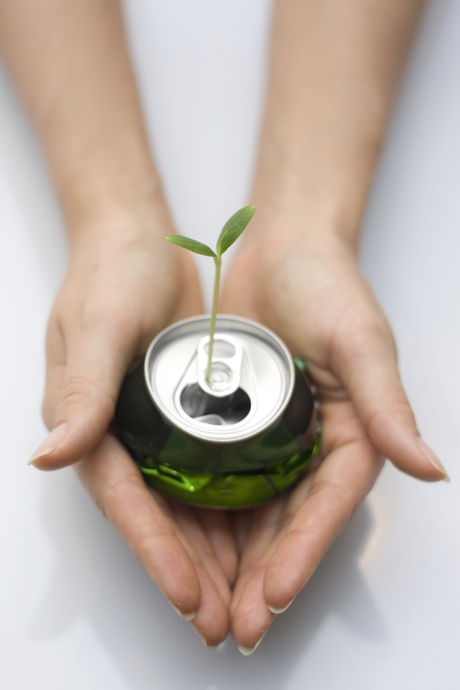Resource recovery — an important step towards a sustainable future
By Richard Pittard, Head of Health, Safety and Environment, Cleanaway
Monday, 18 July, 2016

There is an ever-increasing focus on sustainability across all industry and community sectors. More companies are beginning to report on sustainability targets, and the community is increasingly focused on the sustainability of not just the businesses they purchase from — but their entire supply chain as well.
Of the 17 Sustainable Development Goals (SDGs) adopted by the UN in 2015, one is dedicated to ensuring sustainable consumption and production patterns by 2030. And a critical component of this complete supply chain is the management of ‘waste’. It will be through businesses revisiting the concept of ‘waste’ and increasingly switching focus to resource recovery that they will be able to make more progress towards a more sustainable future.
Since the introduction of kerbside recycling collections in the 1980s, the industry, and the technology we use, has consistently evolved. Today’s resource recovery and recycling efforts are exploring new ways to recycle more items than ever before, reducing the amount of residual ‘waste’ going to landfill — and even then, not leaving any resource untapped.
The April launch of Paintback, in partnership with Cleanaway, a waste paint and packaging collection scheme developed and implemented by the Australian paint manufacturing industry, is one such example. Using new processing technologies, the scheme aims to collect more than 45,000 tonnes of waste paint over the next five years — significantly reducing the amount going to landfill and maximising the inherent value of the recyclable materials.
In the Albury Wodonga region, on the border of New South Wales and Victoria, in partnership with six local councils and shires, we supported the introduction of a kerbside organics collection service in July 2015 and we are now seeing recovery rates in excess of 80% from local households’ kerbside collection service. Which means only 20% of the ‘waste’ put out for kerbside collection by local residents’ bins ends up in landfill.
Cleanaway also works with a number of large Australian-based manufacturers to tailor bespoke solutions to recover as much as possible from their waste. And with more companies aiming towards zero waste to landfill as a key sustainability measure, it is a growing area of focus for our business.
In 2014, Cleanaway’s Thomastown Grease Trap processing plant received the Innovation in Sustainability Award for our patented filtration system, which not only allows us to discharge cleaner water after processing, but importantly has led to an 80% reduction in the amount of residual waste going to landfill, and allows us to generate millions of litres of recoverable, saleable tallow — something which would have previously been lost.
This process was developed from those in other parts of our business to refine used ship oil — processing it for beneficial re-use. We are the nation’s largest collector of used mineral oil from workshops all over the country — seeing us process more than 150 million litres of oil each year. Refining this, and closing the loop to put it back into production, saves Australia 900,000 new barrels of oil each year.
Of course, the innovations and investment haven’t stalled in the tried and true collection and processing of paper, cardboard and plastics. The nation’s recycling rates continue to improve, and technological advances mean increasingly sophisticated processing and sorting plants across the country.
Cleanaway recently opened a brand new facility in Hemmant, Qld, which can process up to 75,000 tonnes of recycling each year. The facility also processes Cleanaway’s Harvest Recycling service, allowing businesses to mix recyclable packaging materials — including cardboard, paper, plastic, shrink wrap and polystyrene in one bin, to be separated and baled for recycling in the new facility.
New technology is also lifting the recycling game with a new Materials Recycling Facility (MRF) currently under construction in Perth. This ‘super’ MRF will be able to process 50 tonnes of recyclables per hour and will contain new automated sorting technology, allowing Cleanaway to further increase recovery rates, with an anticipated 95% of recyclable commodities which enter the system able to be recovered.
Even the residual waste, which isn’t able to be recovered and subsequently ends up in landfill, doesn’t go to waste. Cleanaway aims to still recover as much from this as possible — in the form of energy which is generated as a by-product of natural decomposition. Demonstrating the value of this, in 2015, Cleanaway captured 113 million kilowatt-hours of energy from landfill gas, enough to power 16,000 homes for a year. And as we increase our capacity to tap this new resource, we anticipate these rates will increase.
So while we all have a way to go to ensure we are protecting our scarce natural resources for future generations, ongoing investment into new technology and innovative ways to recover more from waste will help pave the way forward. It will be through an ongoing partnership between companies like Cleanaway and our customers, as well as Australian households and communities, which will see us together make continued progress towards a more sustainable future.
How Sydney's OS Passenger Terminal slashed its waste costs
Veolia has delivered a custom-designed solution that cut the Overseas Passenger Terminal's...
Sludge treatment: a weighty issue
Sludge dewatering might not be the most glamorous process, but it is a vital part of ensuring...
Getting closer to a circular economy for plastics
A new process that vaporises hard-to-recycle plastics in order to make recycled plastics has been...









